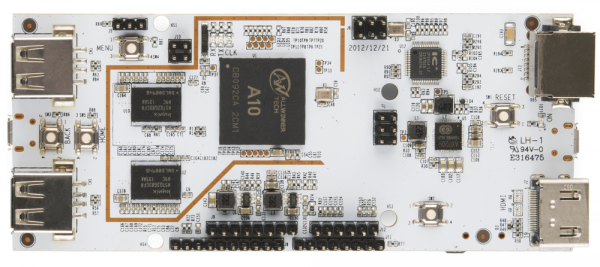Programming the pcDuino
This Tutorial is Retired!
This tutorial covers concepts or technologies that are no longer current. It's still here for you to read and enjoy, but may not be as useful as our newest tutorials.
Introduction
The beauty of the pcDuino lies in its extraordinarily well exposed hardware peripherals. However, using these peripherals is more complex than using them on, say, an Arduino-compatible board.
This tutorial will help you sort out the various peripherals, what they can do, and how to use them.
Before we get started, there are a few things you should be certain you're familiar with, to get the most out of this tutorial:
- pcDuino - some familiarity with the basics of the pcDuino is needed before you jump into this. Please review our Getting Started with pcDuino tutorial before going any further.
- Linux - the biggest thing you should be familiar with it the Linux OS. Remember, pcDuino is not an Arduino--it is a modern microcomputer running a fully-functional, if compact, operating system.
- SPI - a synchronous (clocked) serial peripheral interface used for communications between chips at a board level. Requires a minimum of four wires (clock, master-out-slave-in data, master-in-slave-out data, and slave chip select), and each additional chip added to the bus requires one extra chip select line.
- I2C - also known as IIC (inter-integrated circuit), SMBus, or TWI (two-wire interface), I2C uses only two wires (bidirectional data and clock lines) to communicate with multiple devices.
- Serial Communication - an asynchronous (no transmitted clock) data interface with at least two wires (data transmit and data receive; sometimes, additional signals are added to indicate when a device is ready to send or receive).
- Pulse Width Modulation - a digital-to-analog conversion technique using a fixed frequency square wave of varying duty cycle, which can be easily converted to an analog signal between 0V and the full amplitude of the digital IC driving the signal.
- Analog-to-Digital Conversion - measurement of an analog voltage and conversion of that voltage into a digital value.
All of the code in this tutorial can be found online, in our pcDuino Github repository. It's not a bad idea to check there for any updates to the code since this tutorial was written.
